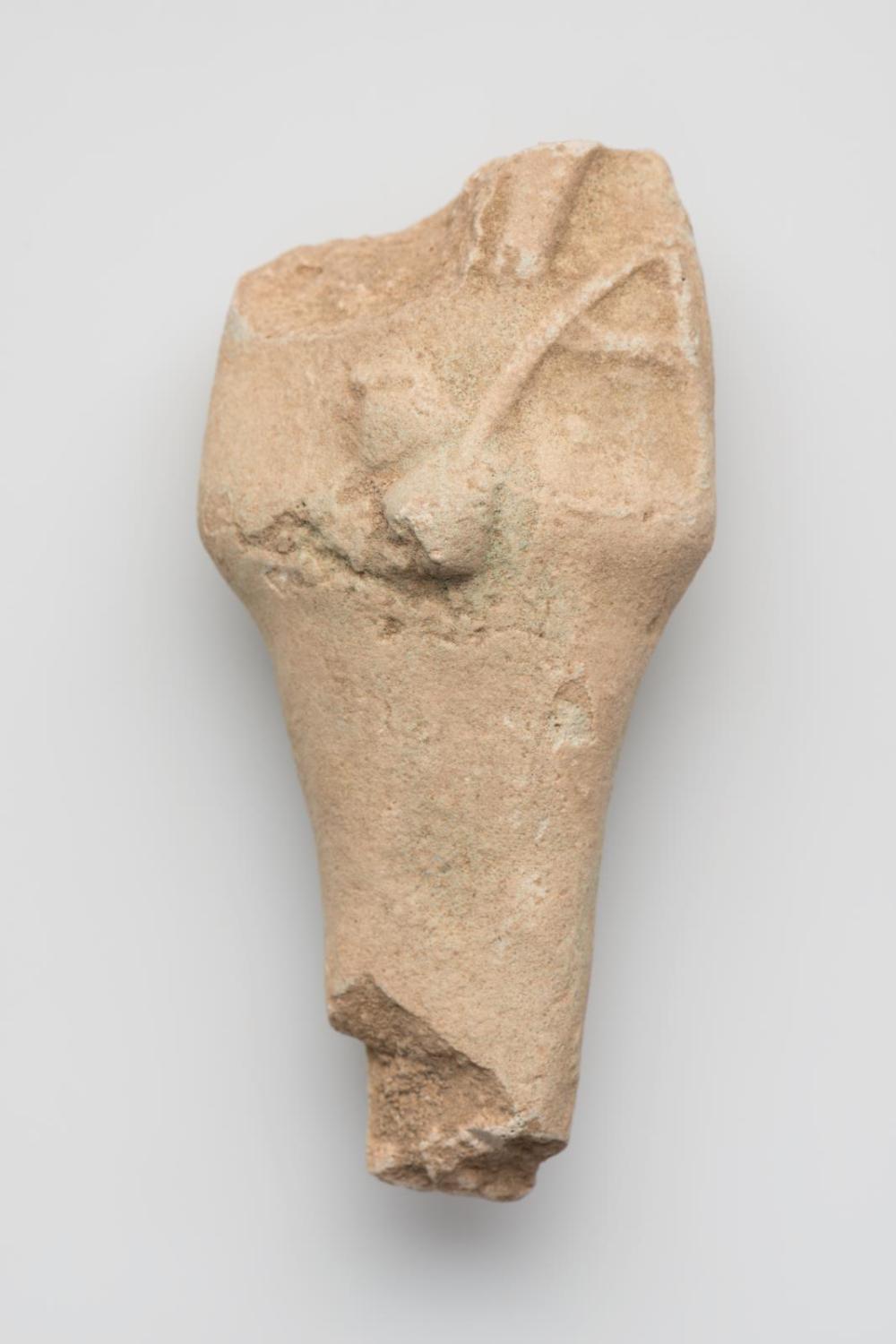Advanced Search 

Shawabty of King Atlanersa
Nubian
Napatan Period, reign of Atlanersa
653–643 B.C.
Findspot: Nubia (Sudan), Nuri, Pyramid 25, stairs before thieves' hole
Medium/Technique
Faience
Dimensions
Overall: 10.1 cm (4 in.)
Credit Line
Harvard University—Boston Museum of Fine Arts Expedition
Accession Number21.14420
NOT ON VIEW
CollectionsAncient Egypt, Nubia and the Near East
ClassificationsTomb equipment – Shawabties and shawabty boxes
DescriptionThis is a shawabty belonging to King Atlanersa. The male figure wears a tripartite wig and has a long beard. The shawabty is uninscribed. This mummiform shape has a back pillar and a base. The arms are crossed and the hands are right over left. One hoe is held in the right hand resting on the left shoulder. Typically, the left hand also holds a cord to a small bag slung over the right shoulder, but the cord and seedbag are missing in this figure. The head is missing as are the right shoulder and lower legs and feet.
The ancient Nubians included shawabtys in their tombs only in the Napatan Period, about 750–270 B.C. These funerary figurines are based on Egyptian shawabtys, but differ from them in many features of their iconography. For instance, the known Nubian examples are only from royal tombs. Also, they have unique texts, implements, poses and are known to have the largest number of shawabtys included in one tomb. Their function, it is assumed, was the same as that of the Egyptian shawabty, namely to magically animate in the Afterlife in order to act as a proxy for the deceased when called upon to tend to field labor or other tasks. This expressed purpose was sometimes written on the shawabty itself in the form of a "Shawabty Spell," of which versions of various lengths are known. Shorter shawabty inscriptions could also just identify the deceased by name and, when applicable, title(s). However, many shawabtys carry no text at all. The ideal number of such figurines to include in a tomb or burial seems to have varied during different time periods.
The ancient Nubians included shawabtys in their tombs only in the Napatan Period, about 750–270 B.C. These funerary figurines are based on Egyptian shawabtys, but differ from them in many features of their iconography. For instance, the known Nubian examples are only from royal tombs. Also, they have unique texts, implements, poses and are known to have the largest number of shawabtys included in one tomb. Their function, it is assumed, was the same as that of the Egyptian shawabty, namely to magically animate in the Afterlife in order to act as a proxy for the deceased when called upon to tend to field labor or other tasks. This expressed purpose was sometimes written on the shawabty itself in the form of a "Shawabty Spell," of which versions of various lengths are known. Shorter shawabty inscriptions could also just identify the deceased by name and, when applicable, title(s). However, many shawabtys carry no text at all. The ideal number of such figurines to include in a tomb or burial seems to have varied during different time periods.
ProvenanceFrom Nubia (Sudan), Nuri, Pyramid 20 (tomb of Atlanersa), but originally found on Pyramid 25 stairs from before the thieves' hole. 1917: excavated by the Harvard University–Boston Museum of Fine Arts Expedition; assigned to the MFA in the division of finds by the government of the Sudan.
